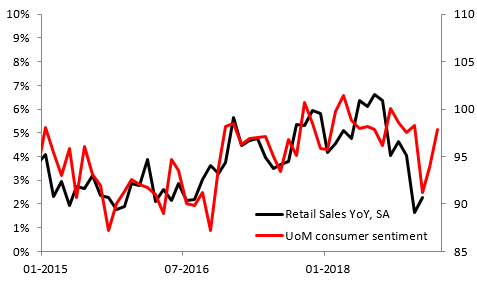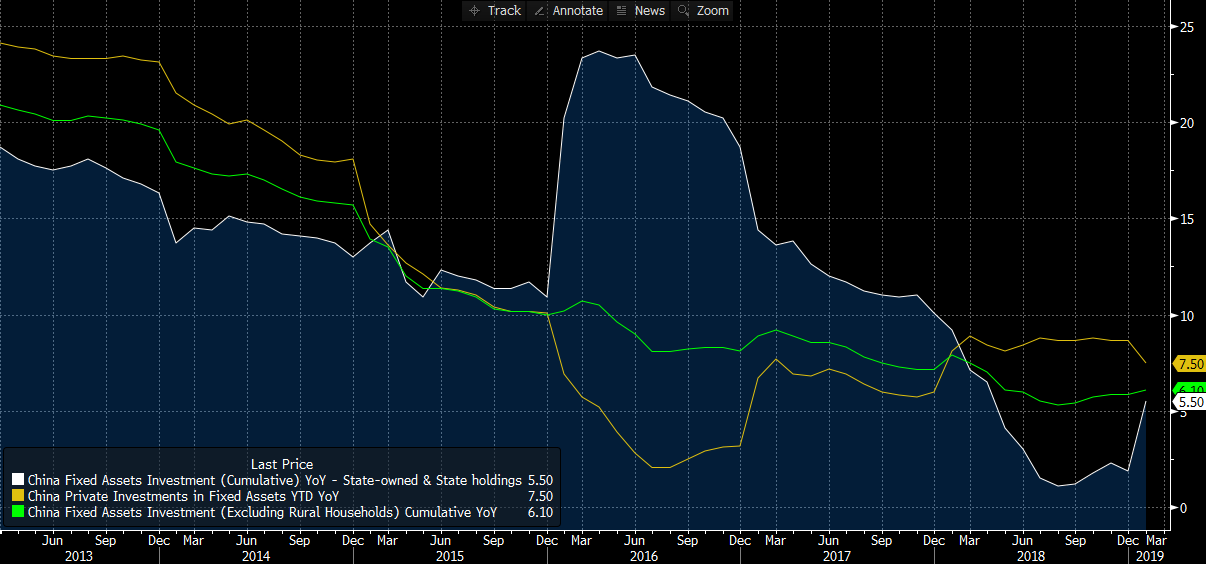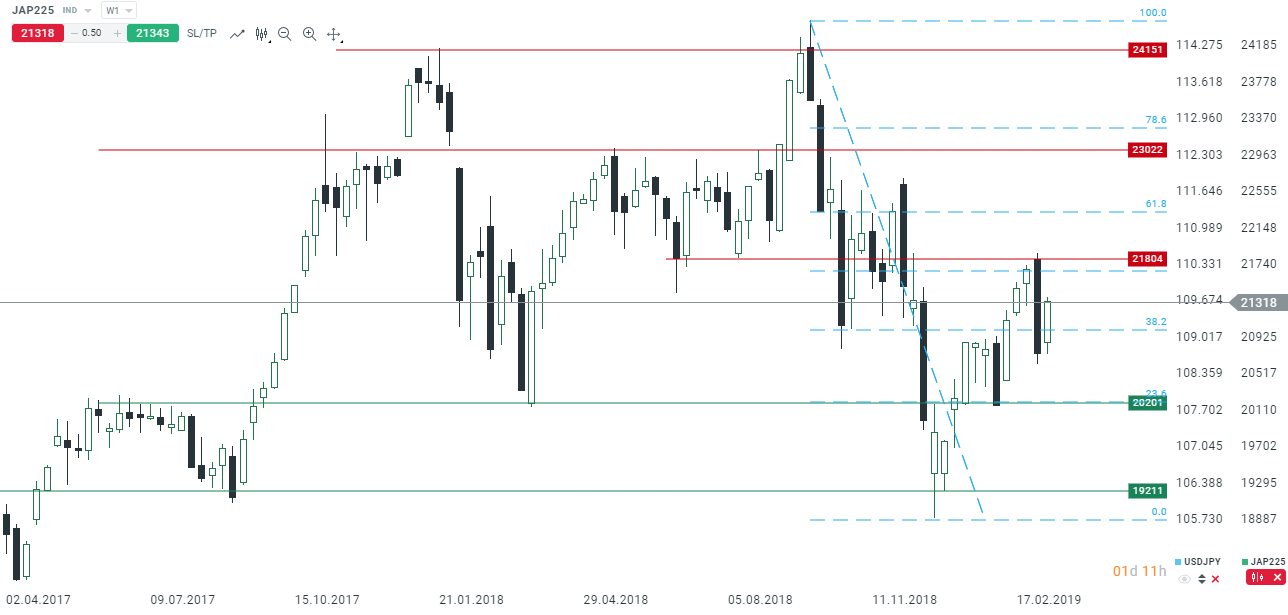Resumen:
- Multitud de señales difusas desde EEUU
- Aún sin señales de recuperación en China
- El índice NIKKEI (JAP225) podría perfilarse a la baja en un futuro cercano
Mixed signals from the US ahead of the Fed meeting
Comience a invertir hoy o pruebe una demo gratuitamente
Hazte Cliente Cuenta de Formación Descarga la app móvil Descarga la app móvilThis week has brought a lot of macroeconomic data from the US economy and they have not been unequivocal. First of all, inflation for February came in below expectations, albeit core prices grew 2.1% YoY, momentum weakened which could play a role in setting monetary policy ahead. Let us note that the Federal reserve will meet next week and it will produce the updated macro projections including a dot-chart. The latter could outline the prospect regarding any possible rate hikes in this cycle. The Fed showed in December that members, on average, expected rates to be hiked once this and the following year. However, taking into account a dimmer outlook for growth this year one could expect that dots could be lowered somewhat. Keep in mind that risks are not balanced right now as the market does not see any odds for a hike this year (a cut is partly priced in).
 Consumer confidence measured by the University of Michigan signals that retail sales might have been reached a trough. Source: Macrobond, XTB Research
Consumer confidence measured by the University of Michigan signals that retail sales might have been reached a trough. Source: Macrobond, XTB Research
Getting back to the data one needs to stress a positive surprise in retail sales for January which, however, came after the gloomy number released for December. Here, we have to make a point of importance of Black Friday. This event, at least to some extent in case of the US, could explain December’s weakness. A government shutdown suggests rather a mixed impact on sales there. On Friday we got the data on US consumer confidence for March producing a rise to 97.8 from 93.8 points in February - a signal that retail sales could bounce back before long. Finally, industrial production for February missed expectations producing a modest 0.1% MoM increase after falling 0.4% MoM in January. Note that the report showed capacity utilization falling to 78.2% from 78.3%, below the expected 78.5%. It could be seen as another tiny signal of muted inflationary pressures ahead.
Bleak industry data from Japan and China
Data from China we got on Thursday showed no green shoots of recovery yet, despite a steps undertaken by the government to counteract slowing growth. While these measures, coupled with tax cuts announced recently, could revive growth to some extent, one needs to be aware that the China’s government does not want to resurrect GDP growth at any cost (to fuel debt). This notion was confirmed today by Prime Minister Li Keqiang. The data published yesterday showed industrial production rose 5.3% YoY (combined January and February), the worst start to a year since 2009. On top of that, retail sales grew 8.2% YoY, slightly beating expectations. Last but not least, investments in fixed assets surprised to the upside rising 6.1% YoY (YTD), up from 5.9% YoY. Nevertheless, the details showed that a rise in the first two months of the year came solely from the public sector providing evidence the government has begun injecting money to the economy. Note that investments in the private sector declined. Such the trend could lift the overall level of investments in the short-term but it is unlikely to last in the longer one.
 Investments in fixed assets in China rebounded during the first two months of the year but the rise was solely driven by the public sector. Source: Bloomberg
Investments in fixed assets in China rebounded during the first two months of the year but the rise was solely driven by the public sector. Source: Bloomberg
From Japan we got machinery orders data for January which produced a 5.4% MoM fall, a third decline in a row and the steepest decrease since September last year. This series is considered as a leading indicator for capital expenditure, thus it was not the good start to this year. If this trend unfolds, it could weigh on CAPEX and thereby GDP growth over the first three months of 2019.
 The Japan’s NIKKEI (JAP225) failed to recover all of the falls it saw in the previous week. As a result, the index could be prone to move toward 20200 points followed by 19200 points. Source: xStation5
The Japan’s NIKKEI (JAP225) failed to recover all of the falls it saw in the previous week. As a result, the index could be prone to move toward 20200 points followed by 19200 points. Source: xStation5
"Este informe se proporciona sólo con fines de información general y con fines educativos. Cualquier opinión, análisis, precio u otro contenido no constituyen asesoramiento de inversión o recomendación en entendimiento de la ley de Belice. El rendimiento en el pasado no indica necesariamente los resultados futuros, y cualquier persona que actúe sobre esta información lo hace bajo su propio riesgo. XTB no aceptará responsabilidad por ninguna pérdida o daño, incluida, sin limitación, cualquier pérdida de beneficio, que pueda surgir directa o indirectamente del uso o la confianza de dicha información. Los contratos por diferencias (""CFDs"") son productos con apalancamiento y acarrean un alto nivel de riesgo. Asegúrese de comprender los riesgos asociados. "

